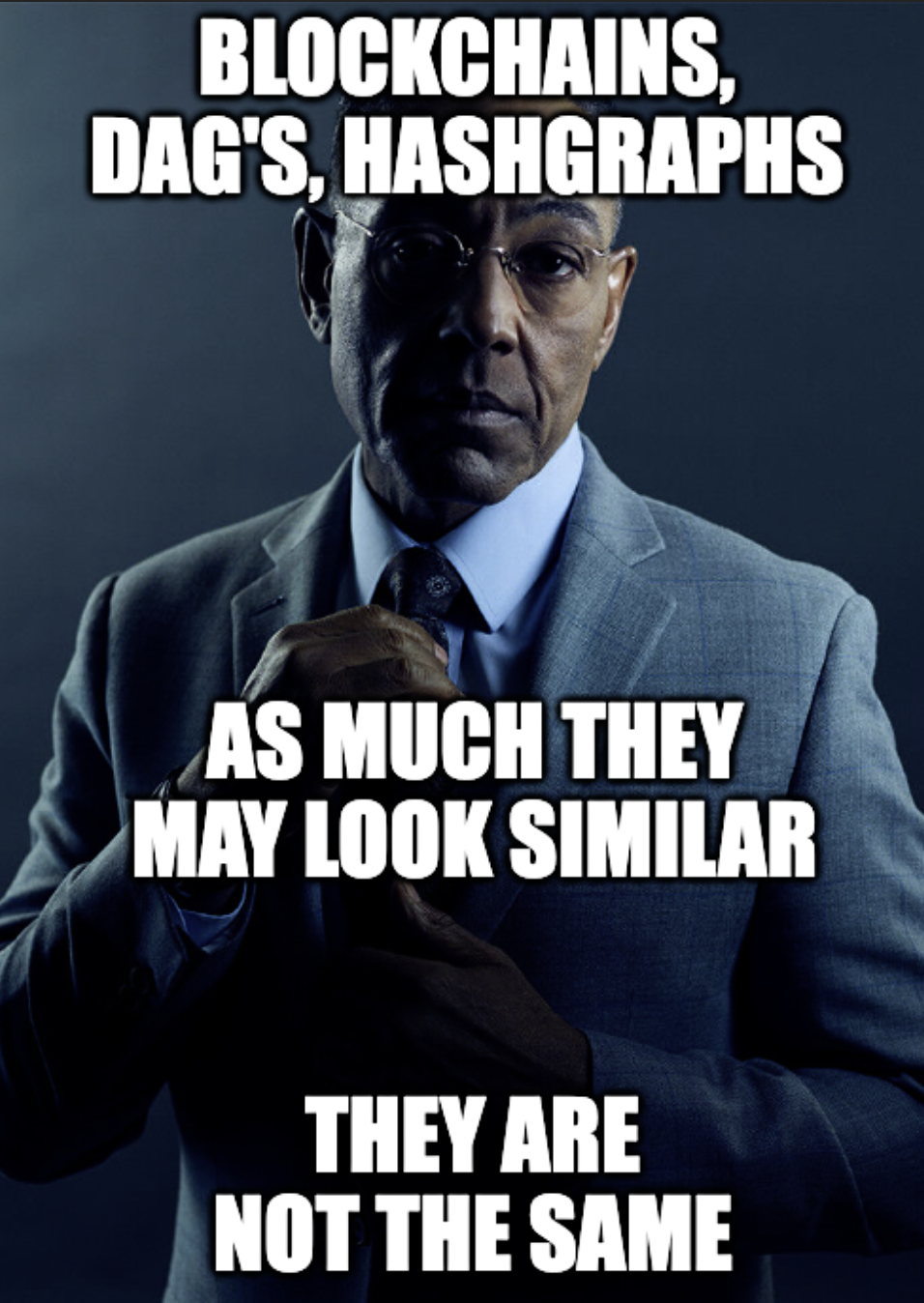Dag vs. Blockchains vs. Hashgraphs: A Deep Technical Comparison



Let’s take a dive into the world of distributed ledger technologies (DLTs), as understanding the differences between Directed Acyclic Graphs (DAGs), Blockchains, and Hashgraphs is critical for both developers and investors while deciding on the Ledger Technology to use based on design.
This blog post aims to provide a comprehensive technical comparison of these technologies, delving into their structures, operational mechanisms, and potential applications.

Before comparing the specific technologies, it's important to understand the overarching concept of DLTs. DLTs are systems that enable the secure recording of transactions across multiple computers in a decentralized manner. This decentralization is key to their resilience against tampering and fraud.
Blockchains are the most well-known form of DLTs, with Bitcoin and Ethereum being prime examples.
Chain of Blocks:
A blockchain is essentially a chain of blocks, each containing transaction data.
Consensus Mechanism:
Blockchains rely on consensus mechanisms like Proof of Work (PoW) or Proof of Stake (PoS) to validate transactions.
Immutability and Security:
Once data is recorded on a blockchain, it is challenging to alter, providing robust security.
DAGs represent a different approach to distributed ledgers, with IOTA being a notable example.
Graph-Based Structure:
Unlike blockchains, DAGs do not organize data in blocks but in a graph structure where various types of transactions directly reference one another.
No Need for Blocks or Miners:
This structure eliminates the need for blocks and miners, potentially increasing transaction speeds and reducing costs.
Security Concerns:
The security of DAGs, especially in the face of fewer nodes, can be a concern.
Hashgraph is a relatively new DLT that promises to address some of the limitations of blockchains and DAGs.
Gossip about Gossip Protocol:
Hashgraph uses a novel consensus approach known as the "gossip about gossip" protocol. One good example is from Hedera - This means that a member such as Alice will choose another member at random, such as Bob, and then Alice will tell Bob all of the information she knows so far. Alice then repeats with a different random member. Read more here.
Virtual Voting Mechanism:
It employs a virtual voting mechanism to achieve consensus without the need for a PoW or PoS system.
High Throughput and Efficiency:
Hashgraph claims to offer higher throughput and efficiency compared to blockchains.
Patented Technology:
Unlike the open-source nature of many blockchains and DAGs, Hashgraph is patented, which might limit its adoption and modification.
Blockchains: Limited scalability and slower transaction speeds due to PoW or PoS mechanisms. Though with newer technologies like rollups & zk, blockchains aim & are closer to scale to a level at least where they cover most practical scenarios
DAGs: Offer improved scalability and faster transaction processing by eliminating the need for block creation and miners.
Hashgraphs: Claim to have superior scalability and speed due to the efficient gossip about gossip protocol and virtual voting.
Blockchains: Generally offer high security and decentralization, but this can vary based on the consensus mechanism used.
DAGs: Face challenges in maintaining security, especially with a lower number of nodes, and their degree of decentralization can be variable.
Hashgraphs: Boast strong security features, but the patented nature raises questions about decentralization and openness.
Blockchains: Have a vast and established ecosystem with widespread adoption in various sectors.
DAGs: Gaining traction in specific applications, especially where high throughput and scalability are essential.
Hashgraphs: Limited adoption so far, partly due to the patented nature of the technology.
Cryptocurrencies: The most common application, with Bitcoin and Ethereum being the most notable.
Smart Contracts and Decentralized Applications (DApps): Ethereum and similar blockchains enable complex applications.
Microtransactions and IoT: DAGs like IOTA are well-suited for environments requiring quick and numerous transactions, such as IoT.
Enterprise Solutions: Due to their efficiency and throughput, hashgraphs are poised for adoption in enterprise solutions requiring high performance.

In conclusion, while blockchains, DAGs, and hashgraphs each have their unique structures, strengths, and limitations, the choice between them depends on the specific requirements of the use case. Blockchains offer robust security and an established ecosystem, DAGs provide scalability and speed, and hashgraphs bring efficiency and high throughput. The future of DLTs lies in leveraging the best of these technologies, possibly through interoperable solutions that combine their strengths while mitigating their weaknesses.